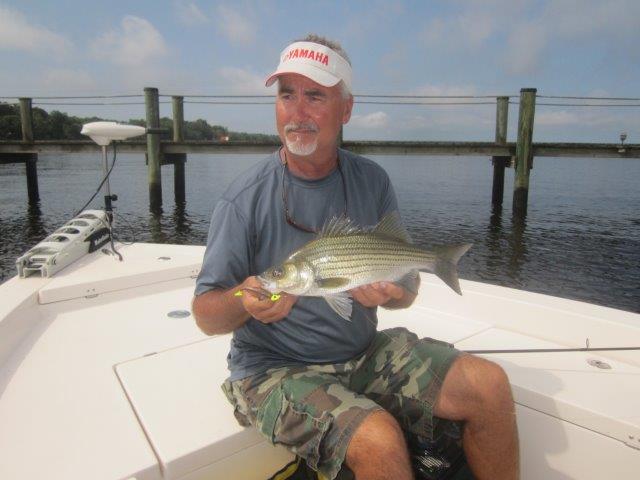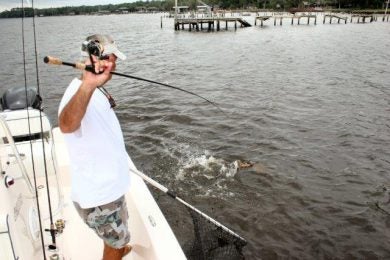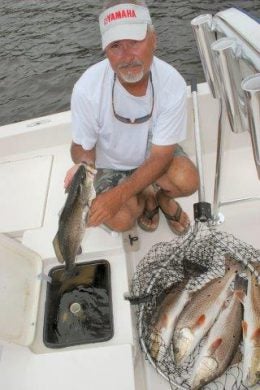Dock Fishing Expert Mike Hayes Offers Sage Tips to Tag More Fish
Bob McNally 06.14.16

While trial-and-error fishing is the best method of pinpointing the most productive docks, there are some keys to locating dock fishing gold. For example, Florida angler Mike Hayes says docks extending closest to the deepest water in an area are ones likely to hold the most and largest fish on a regular basis.
Another ingredient many choice fishing docks have is “age,” and the better ones have lots of pilings with cross supports. The older, more decrepit, and decayed a dock is, the more likely it consistently holds mature fish. Older docks have lots of nooks and crannies, chipped wood, barnacles, and rotting beams. Such docks usually are loaded with fish forage of many types, and this makes them appealing to predator fish.
Shell bars near docks also can be fish magnets, says Hayes. Locating such “shell” areas isn’t easy, but the rough bottom can be “felt” when slowly working jigs along bottom. Jigs having sharp edges, like stand-up style models, are especially good for this, as they “catch” a bit on bottom, much more so than boxing-glove shaped or round jig heads.
Hayes is almost exclusively a jig fisherman around docks, although some fish like bass, snook, and sea trout readily take surface plugs, suspending lures and soft plastic jerk baits worked high in the water column. Jigs, however, can be fished at all depths and are ideal for “skipping” far back under docks where fish hold in dark shade during bright sunny weather.
“Skipping” jigs under docks takes a bit of practice and talent. A couple aids to doing it well are to use short rods about 6-feet in length, and make low, side-arm casts to the target. Having the lure just an inch or so below the rod tip when casting also helps get baits up-and-under piers harboring fish.

